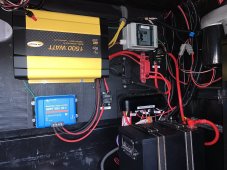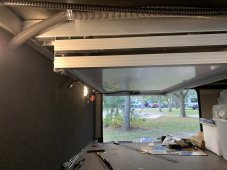4 drop-in 12V 100Ah LiFePO4 batteries will be more like 120lbs. 2 drop-in 12V 200Ah batteries might be closer to 90lbs. I suppose a DIY battery can be a little lighter depending on the case but I think 60lbs is really optimistic.
You are right, 60lb is literally
the most optimistic (and then some). Unrealistic really, just a ballpark of the absolute minimum weight for 5kWh.
In my earlier comment I was clear about my numbers being
the absolute minimums (for the cells alone), but dropped/forgot the disclaimer (unintentionally) in my followup post. I should go back and clarify.
Because there are so few details and specifics in the OP, I'm sorta treating this as a thought experiment at this point, and musing about some vague minimums, extrapolated from W/kg and Wh/kg, not necessarily whats realistic/average/or even maybe possible (for instance the 5.65 kg / kWh is based on the EVE 304Ah cells, and clearly there is no way to build a 400AH battery from 304Ah cells). My math is not helpful in a practical sense here. In my mind I'm starting from the point of "assuming you used the most energy dense / efficient version possible of everything, is it feasible or realistic for a system like this to be 'portable'.
The 60lb, is based on using one of
the most energy dense cells I am aware of (EVE 304Ah), and
only accounts for the cells themselves, busbars, BMS, fuse, enclosure, etc will all add weight and bulk, pre-builts might be heavier as well, and likely bulkier.





